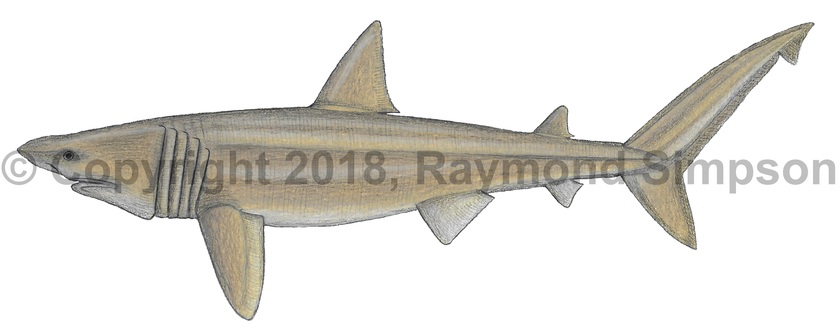
Common Name
Basking Shark
Year Described
Gunnerus, 1765
Identification
A huge shark. Body robust and fusiforme. Snout conical. Mouth inferior. Five huge gill slits run almost the entire width of the side of head. When feeding, huge mouth is opened and gill slits are expanded, making the huge head of this shark unmistakeable. Gill rakers bristle-like and large (10-13cm long). Teeth are tiny (3-4mm) with a single backwards pointing cusp. Thousands of teeth often present in jaws. Two dorsal fins: first several times larger than second. Pelvic fin inserted far behind first dorsal fin. Anal fin similar in size to second dorsal and inserted behind it. Pectoral fin large. Caudal fin lunate. Keel present on caudal peduncle. Skin with minute denticles with spines facing in all directions.
Color
Ranges from pale gray to brown to dark gray or black. Can be unmarked or blotched with white blotches. Underside pale. Inside of mouth white. Albinos rare.
Size
The second largest shark species in the world. May reach over 11m in length but normally less than 9m. Records of 12-14m specimens unconfirmed.
Habitat
Strictly pelagic. Found commonly right at the surface and as deep as 1000+m. A filter-feeding species.
Range
Found in temperate waters from Newfoundland to Florida and the Gulf of Mexico. Also the southern Hemisphere from S. Brazil to Argentina.
References
Castro, J.I. 2011. The Sharks of North America. Oxford University Press, 640 pp.